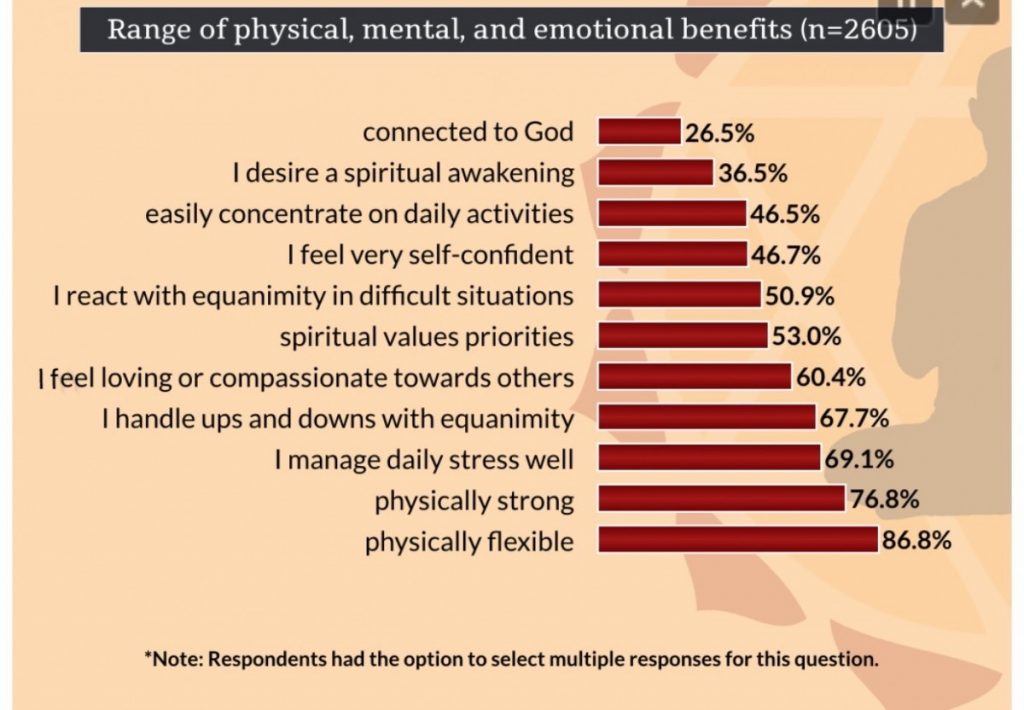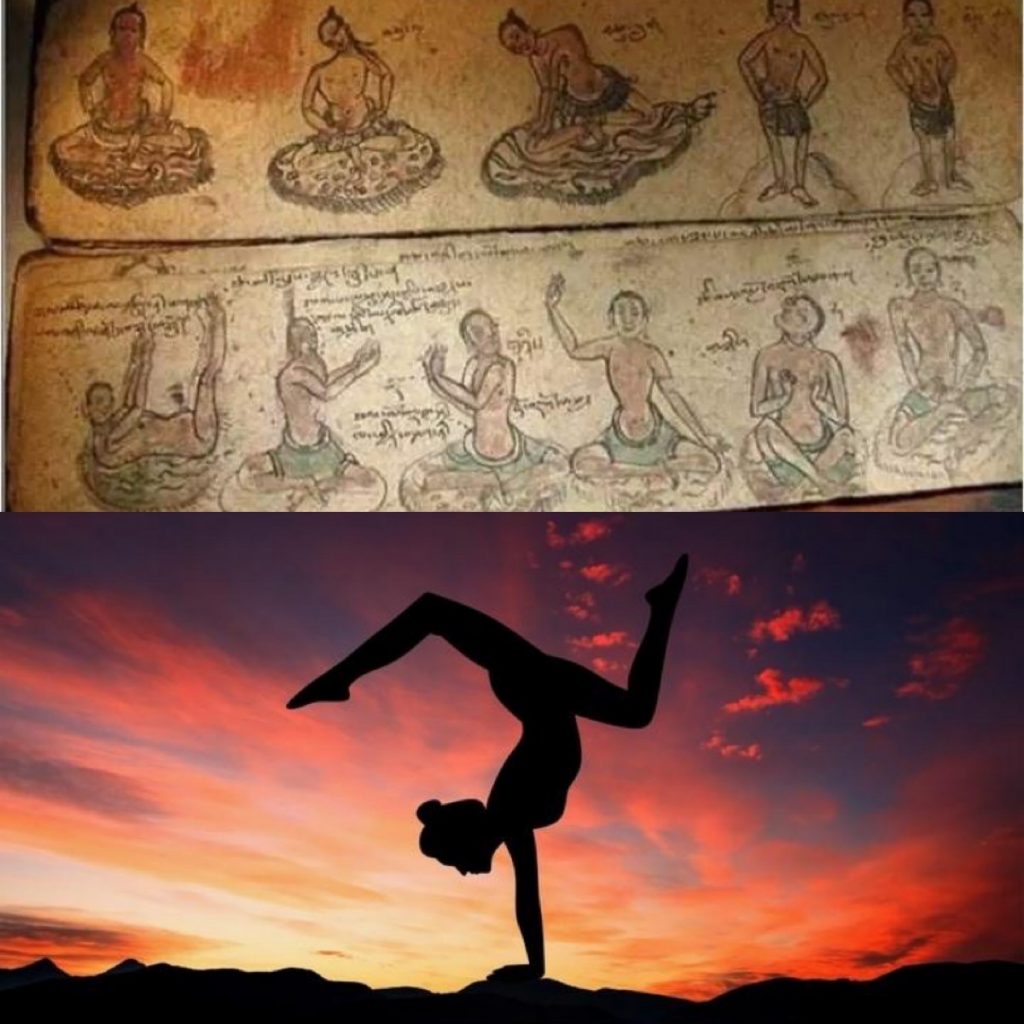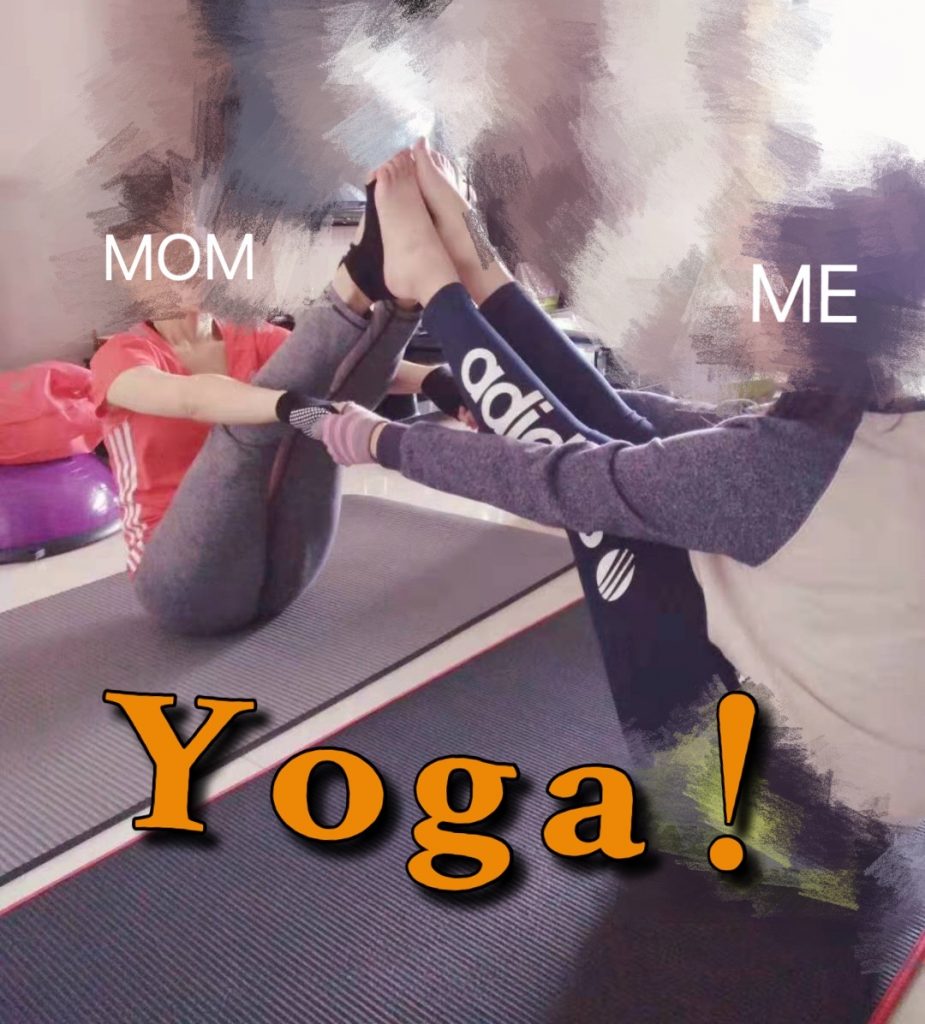Yoga is a mind and body practice origins from ancient India with a 5,000-year history. It’s also one of the most ancient eastern strength techniques that combine physical postures, breathing exercises, and spiritual contemplation(meditation). In more recent years, it has become popular as a form of physical exercise and a self-mind exploration as it enhances well-being and improves people’s control of mind and body. This blog mainly talks about the benefits of yoga. Following explanatory paragraphs, yoga’s further connection with art will also be discussed.
To begin with, yoga benefits people physically. This can be illustrated by two points. First, yoga concentrates on combining breathing with physically stretching muscles, thus improving strength and flexibility. By thrusting muscular systems, yoga enables people to achieve line beauty, dynamic beauty, and skin texture beauty.

Source: Yoganatomy
From this diagram, we can see that about 86.8 percent of yoga participants agree that yoga improves people’s flexibility and strength. According to the experiment, “Twisting your body into yoga’s physical postures stretches multiple muscle groups. In the short term, stretching can change the water content of these muscles, ligaments, and tendons to make them more elastic. Over time, regular stretching stimulates stem cells which then differentiate into new muscle tissue and other cells that generate elastic collagen. Frequent stretching also reduces the body’s natural reflex to constrict muscles, improving your pain tolerance for feats of flexibility” (Sudhir, 2020).
Second, yoga boosts heart and lung function. Breathing exercises in yoga relax the muscles that previously constrict passageways and improve people’s oxygen diffusion. “Increasing the blood’s oxygen content is especially helpful for those with weak heart muscles who have difficulty pumping enough oxygen throughout the body.” (Sudhir 2020) As people doing graceful body language and lithe movements, our respiration, energy, and vitality are all improved by the change in conditions of brain, longevity, internal organs, and spine glands. So, yoga actually provides people with disease resistance and allows us to live longer.
In addition, on the basis of physical benefits, yoga also makes practitioners achieve their intrinsic energetic happiness and wisdom. Through the debugging innermost feelings activity, practitioners learn to pay attention to intrinsic worlds, eliminate their subconscious worriers and even try to improve their inner dispositions. Based on my own experience, I just want to say: If you want to relax yourself in the most comfortable way, do yoga! If you want to be less anxious and have a better mindset before exams, do yoga! If you want to have a more peaceful mind, then do yoga!
However, it’s also important to note that Yoga brings negative effects when people fail to practice correctly. Beginners should definitely take the practice under the supervision of a qualified teacher as wrong poses can cause muscle pulls, neck aches, pain in the knee, severe back pain, etc.
Yoga and arts are inextricably linked, or we can even say that yoga itself is an artwork. It dexterously blends music, dance, and gymnastics in its content so that practitioners are able to sense the beauty of body, music, and language during the process of exercising. Music is indispensable for Yoga and music that are used in Yoga practicing are always soothing and quiet with the sounds of nature. Artists of ancient India often created great works by using the theme of Yoga. Traditional oil painting techniques were used by them to create masterpieces that could express things deeply in their pure mind. In addition, modern photographers are also fond of using yoga poses to create their photographs. They believe that Yoga’s beauty in form and its spiritual beautifulness can bring intense impacts to people’s senses.


“Yoga is the artwork of awareness on the canvas of body, mind and soul” (Ray, 2010). From the discussion above, we can find that yoga is such a great masterpiece in the art that is beneficial for our body and mind. It benefits us physically by helping us exercise our muscles as well as improving heart and lung functions. Simultaneously, it helps us mentally by refueling the energy into our minds. So, why not try some practice of yoga for fun and health!
Work Cited
Does Frequency Of Yoga Practice Matter? Yoga anatomy. 2018 Oct 23 [accessed 2021 Mar 5]. https://www.yoganatomy.com/frequency-of-yoga-practice/
Sudhir K. What yoga does to your body and brain. Ted.com. 2019 [accessed 2021 Mar 5]. https://www.ted.com/talks/krishna_sudhir_what_yoga_does_to_your_body_and_brain?language=en
Rat A. Yoga and Vipassana: An Integrated Life Style. Inner Light Publishers. 2010.
I think this is very informative. I originally thought that yoga was only used to try and limber up muscles and improve mental focus. Learning about all these positive sides of yoga was very interesting, and it was astonishing to see how everyone responded so positively in the figure you referenced.